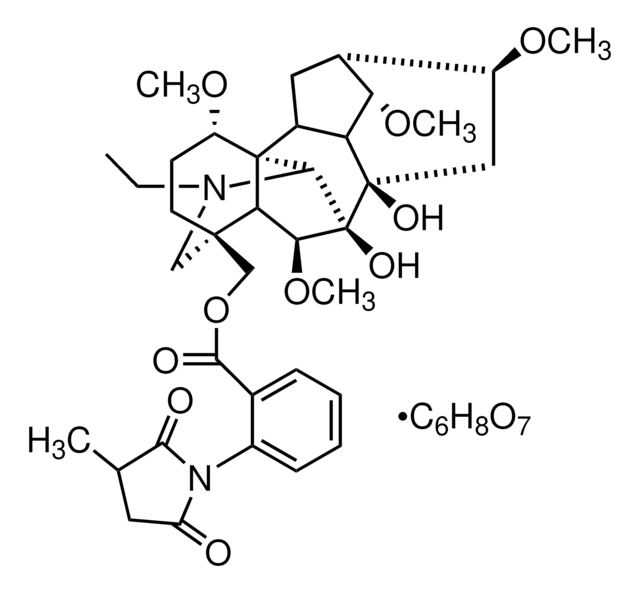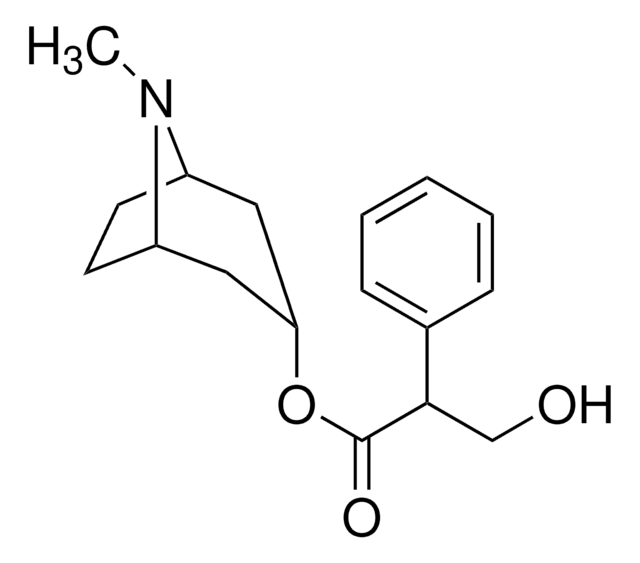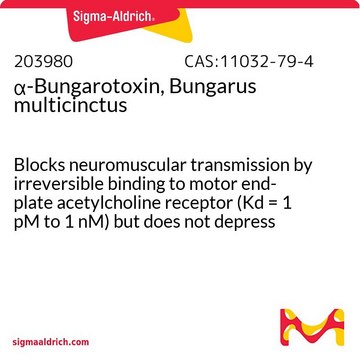M9020
Mecamylamine hydrochloride
≥98% (TLC), powder, nAChR antagonist
Synonym(s):
2-(Methylamino)isocamphane hydrochloride, Inversine, N,2,3,3-Tetramethylbicyclo[2.2.1]heptan-2-amine hydrochloride
About This Item
Recommended Products
Product Name
Mecamylamine hydrochloride,
form
powder
Quality Level
solubility
ethanol: 122 mg/mL
H2O: 47 mg/mL
isopropanol: 476 mg/mL
glycerol: 95 mg/mL
originator
AstraZeneca
SMILES string
Cl.[H][C@@]12CC[C@@]([H])(C1)C(C)(NC)C2(C)C
InChI
1S/C11H21N.ClH/c1-10(2)8-5-6-9(7-8)11(10,3)12-4;/h8-9,12H,5-7H2,1-4H3;1H/t8-,9+,11?;/m1./s1
InChI key
PKVZBNCYEICAQP-CIISUUNXSA-N
Gene Information
human ... CHRNA1(1134) , CHRNA10(57053) , CHRNA2(1135) , CHRNA3(1136) , CHRNA4(1137) , CHRNA5(1138) , CHRNA6(8973) , CHRNA7(1139) , CHRNA9(55584) , CHRNB1(1140) , CHRNB2(1141) , CHRNB3(1142) , CHRNB4(1143)
Looking for similar products? Visit Product Comparison Guide
Application
Biochem/physiol Actions
Features and Benefits
Caution
Signal Word
Danger
Hazard Statements
Precautionary Statements
Hazard Classifications
Acute Tox. 3 Oral
Storage Class Code
6.1C - Combustible acute toxic Cat.3 / toxic compounds or compounds which causing chronic effects
WGK
WGK 3
Flash Point(F)
Not applicable
Flash Point(C)
Not applicable
Personal Protective Equipment
Regulatory Listings
Regulatory Listings are mainly provided for chemical products. Only limited information can be provided here for non-chemical products. No entry means none of the components are listed. It is the user’s obligation to ensure the safe and legal use of the product.
JAN Code
M9020-100MG:
M9020-BULK:
M9020-5MG:
M9020-25MG:
M9020-5MG-PW:
M9020-VAR:
M9020-100MG-PW:
M9020-25MG-PW:
Choose from one of the most recent versions:
Already Own This Product?
Find documentation for the products that you have recently purchased in the Document Library.
Customers Also Viewed
Our team of scientists has experience in all areas of research including Life Science, Material Science, Chemical Synthesis, Chromatography, Analytical and many others.
Contact Technical Service











